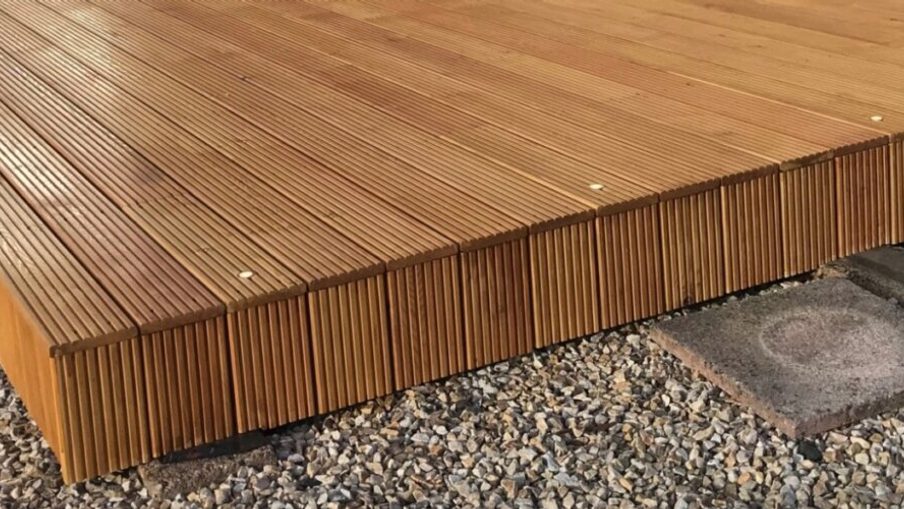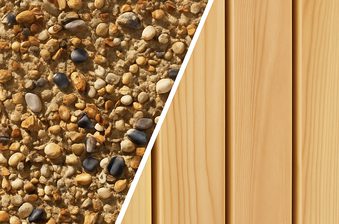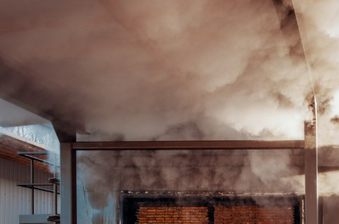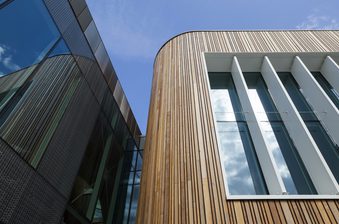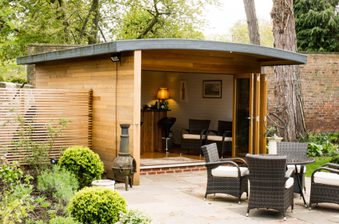Often dubbed ‘African teak’ and even a timber ‘Rolls Royce’, Iroko is a truly special species, suitable for almost any project.
With phenomenal natural outdoor resistance, gorgeous exotic golden brown hues and rock-hard density, Iroko is a firm favourite for home improvers, commercial specifiers — and even boatbuilders!
Let’s explore more about this popular species and why it’s such a go-to wood for decking, fencing, cladding, furniture making and much more.
Iroko: a quick guide
With the scientific name Milicia excelsa, Iroko is a hardwood tree native to the west coast of tropical Africa. Also known as ìrókò, logo, loko (or even uloho or odum in some native languages), these large trees typically grow between 30–40m and can live for up to 500 years.
Iroko: colour, appearance and texture
When first machined, iroko has a golden-yellow colour. But, like any good wine, it gets even better with age. Iroko’s heartwood’s hues will slowly deepen to a medium golden brown and eventually a rich, luxurious copper brown. Variance in colour is to be expected between different boards, as are dark streaked markings.
Although iroko has phenomenal outdoor durability — as we’ll discuss — if left exposed to the elements, moisture and the sun’s UV will cause it to very slowly lose this colour and weather to a distinguished silvery-grey. Not an altogether bad thing, depending on your architectural preferences! This greying process can be effectively halted with the use of a quality preservative.
Iroko timber has a medium-to-coarse but even texture. Like many tropical hardwoods, iroko has large, open pores that contribute to an interesting, characterful grain pattern.
What is iroko wood used for?
From decking to fencing, cladding, furniture and flooring, iroko’s superb density, durability and stability lend it to an incredibly wide range of applications and uses. With its luxurious golden brown-copper hues, it’s popular for smaller specialty items, woodturning, veneers and other items. Naturally oily and moisture resistant, iroko is even popular for boatbuilding.
Durability and stability
Due to its ‘upbringing’ surrounded by the intense, dry heat, wind and rain of tropical Africa, iroko is a highly seasoned wood. An oily hardwood, it has very high natural resistance to insects, pests and decay — a go-to outdoor timber for use in exposed areas.
Iroko is an oily, waxy wood that’s resistant to large changes in its moisture content, meaning it has low levels of movement, shrinking and warping. This makes it a dimensionally stable wood, even popular for marine use.
As mentioned, preservative treatment is not usually required before iroko is used outdoors, although it may be preferred in order to retain the original copper shades of colour.
Although we only speak of its durability and stability, the Yoruba people (a West African ethnic group) believe the tree to even have healing properties!
Strength and hardness
Iroko is dense and abrasion resistant, with a dry weight of 660kg/m³. On the Janka scale — a measure of the relative hardness of different wood species — iroko clocks in at a very respectable 1,260 lbf (pound force). The test measures the amount of force required to embed a steel ball into the wood.
For comparison, a classically scratch and impact-resistant timber like teak has 1,155 lbf, with species of oak ranging from 1,120–1,360 lbf — which means iroko is in esteemed company.
Workability
Iroko is a fairly workable wood, producing good results with hand tools and when being planed, turned and moulded. The wood takes well to glueing, nailing, finishing and varnishing, with a tolerable steam bending ratio.
However, iroko does have a tendency to blunt tools because of the presence of hard calcium carbonate. In areas where iroko’s characteristic interlocking grain occurs, tearout can also be an issue.
Sustainability
According to the IUCN Red List — a leading database of the conservation status of the world’s biodiversity — Iroko is classified as ‘Lower Risk’, a classification below Vulnerable. So, when buying your iroko, be sure that it’s sourced from sustainably-managed forests.

Some types of African hardwood — such as teak — are sadly harvested unsustainably and often illegally. This leads to dwindling populations and a threat to species’ long-term survival (not to mention higher prices).
One way to ensure you’re buying sustainably is to partner with merchants who have a clear, unequivocal environmental and social commitment — like us.
Cost and availability
Iroko is imported from west Africa and commercially available at a moderate cost; it’s typically slightly pricier than popular woods like Siberian Larch and Alaskan Yellow Cedar, whilst usually similar in cost to European Oak, Balau and Western Red Cedar.
What many people value, however, is that iroko is a far more affordable (and sustainable) alternative to genuine teak, with which it shares many similarities in terms of appearance, durability and stability.
Treatment
As mentioned, because of its excellent natural durability, iroko does not need any treatment before being used outdoors. But to maximise its longevity and preserve its natural colour — after around 12 months, it will start to turn a silvery-grey — you can apply a quality preservative.
Because of its natural oiliness, iroko should be first wiped down with methylated spirits to remove any substances that may lead to coating or adhesion failure before the finish is applied. There are many different types of treatment on the market, and our team would be delighted to advise — but you usually can’t go wrong with a clear oil finish.
Iroko vs. teak — how do they compare?
Both of these African hardwoods have a beautiful medium-dark golden brown colour after ageing, interesting grain pattern, superb outdoor durability and exceptional physical density. So, it shouldn’t come as a surprise to learn that Iroko proudly holds the nickname ‘African teak’ — and, not so proudly, ‘poor man’s teak’!
As a result, you’ll find that timber from iroko and teak trees share many of the same uses: for furniture, outdoor use and even boatbuilding. Both contain certain oils and natural compounds that make the heartwood extremely decay resistant, requiring almost no treatment to be left outside.
The biggest discernible difference between iroko and genuine teak is undoubtedly the cost; iroko is a far more abundant and commercially available timber. As a result, it comes in at a lower price point and makes for a fantastic teak substitute.
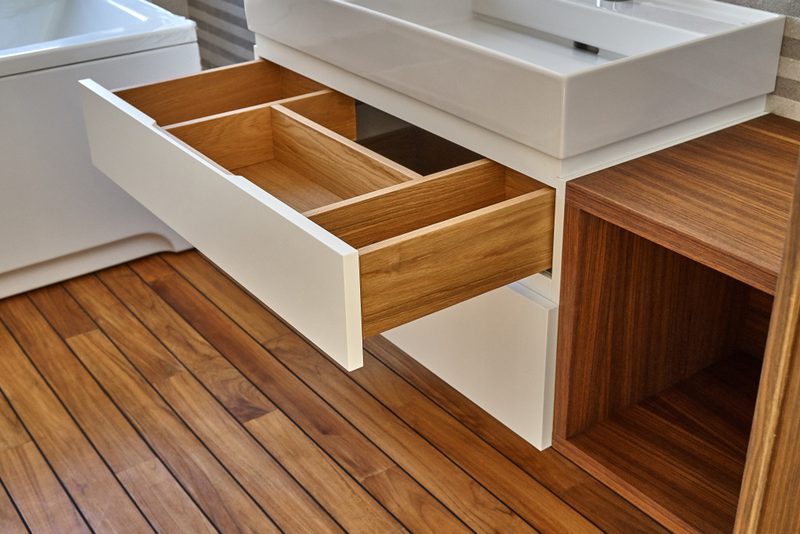
After some sustainably-sourced iroko for your next project?
At Duffield Timber, we’re proud to offer a range of beautiful, durable and sustainable quality sawn timber — including iroko — for almost any project, delivered speedily and securely across the UK.
Whether you’re doing a bit of woodworking, furniture making, decking, fencing or cladding, our team of timber experts would be delighted to help with your next project.
Click the ‘get in touch’ button below, email sales@duffieldtimber.com or phone 01765 640 564 to get started!
